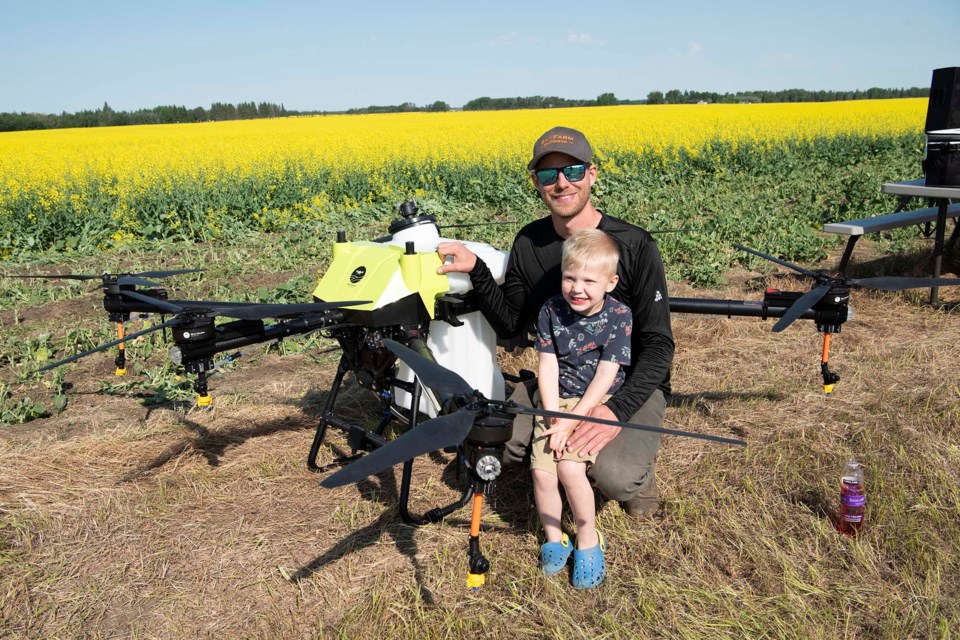It soars like a dragonfly, sounds like a giant bee, and could soon be a common sight over farms in Sturgeon County.
About 70 people were at Folly Farms near Carbondale July 11 to see Sturgeon County farmer Conor Speers fly a large agricultural drone. Speers’ demonstration was part of the 2024 Sturgeon County Agriculture Services Board Tour.
Made by Hanhe Aviation, the drone was about 2.8 m wide and 89 cm tall, sported six propellers, and could spray chemicals or seeds from an onboard tank. Able to lift 100 kg, it sounded like an angry weed-whacker in flight.
Speers said he got interested in drones for agriculture about five years ago when he noticed how parts of his grain farm would often be too wet for his ground-based chemical sprayers. Instead of hiring a plane or helicopter, which was expensive, he looked into drones, which were becoming popular in places such as China.
“In China they went from about 4,000 [agricultural] drones flying in 2016 to 120,000 drones flying in 2021,” he said, citing a June 2024 article by Ohio State University.
“They don’t use ground sprayers anymore. They’ve totally abandoned them for drones.”
Speers said he researched agricultural drones in China and has partnered with SkyFarm Solutions to become the North American distributor for Hanhe Aviation’s drones. While it’s not yet legal in Canada to spray most pesticides from a drone, he’s been spraying fields with water using the drones since last fall as practice.
“It is a big learning curve,” he said of drone piloting.
Flying robo-farmers
Drones are a new but increasingly common sight on Alberta farms, said Markus Weber, who has sold agriculture drones and provided training for their use for about 10 years through LandView Drones and was not involved in the ag services board tour. Up until recently, drones were mainly used to help farmers scout fields for weeds or wayward cows. The last few years have seen bigger drones able to carry spray equipment reach the market, which has promoted new interest in their use.
While Canada currently bars the use drones to spray most pesticides, Weber said farmers can currently use them to disperse seeds and fertilizer.
“I know farmers now that are spraying 10,000 acres with one drone.”
Drones can bring huge savings to farmers, Weber said. Instead of spending $750,000 on a new ground sprayer, you can get the same job done with three drones for about $140,000. A helicopter can spray an acre of crop for about $15, while a drone can do it for about $5.
“The drone is just really low cost,” Weber said.
Drones also don’t have wheels, meaning they won’t crush your crops like ground-based sprayers do, Speers said. Such wheel damage can cost farmers about $10/acre. You can also fly the drone whenever you want (weather permitting), unlike a rented plane or helicopter, which might not be available when your crops need spraying.
Speers said he hoped farmers would invest in drones as an alternative to helicopter spraying. He planned to start selling drones in Canada this year and to expand to the U.S. in 2025.
Weber said the federal government was expected to approve more chemicals for drone dispersal later this year. He advised anyone looking to use an agricultural drone to take a drone piloting course first to learn the rules and the risks.
“The [propeller] blades are spinning at about 1,500 RPMs, and they can do real damage,” Weber said.
Questions on Speers’ drones should go to [email protected].


.png;w=120;h=80;mode=crop)
